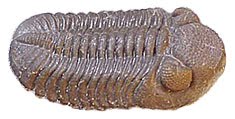Adventures on Earth for September 1 edition of The Review
By George E. Beetham Jr.
The Earth formed some 4.6 billion years ago as material came together to form the planet. For another billion years, the planet would consist of rock and sea.
The seas were not the oceans of today. They were a primordial mix of chemicals that are toxic to life as we know it.
While there may have been some form of life present in those toxic seas, it would take the emergence of one life form that would transform the planet and open it up to life.
Cyanobacteria, or blue-green algae, synthesized sunlight to create energy, taking in carbon dioxide and giving off oxygen.
The cyanobacteria clumped together in mats on the floor of warm, very shallow seas. The organisms trapped sediments that cemented together, forming dome-shaped structures.
As the structures grew, the cyanobacteria moved up, reaching for the sun, staying above the now hardened structure below.
The structures are known as stromatolites. Stromatolites are among the planet’s earlies life forms, forming some 3.5 billion years ago.
Throughout the history of the Earth, stromatolites have ebbed and flowed. After their formation, living creatures grazed the algae at the top of the structure. When grazing creatures thrived, stromatolites began to disappear, emerging again when mass extinctions wiped out the grazers, and then waning as new grazers arose in the wake of the extinctions.
Today stromatolites are found at about a half dozen to a dozen known sites, some in oceans and some in lakes and inland seas.
They have been found in two locations in Western Australia and in the Bahamas.
Some were found in Yellowstone National Park.
Stromatolites are abundant in the fossil record. In particular, the Keyser Formation at the Silurian-Devonian boundary is noted for vast reefs of stromatolites.
A cliff in western Virginia shows stromatolites crowded together, one layer on top of another.
Stromatolites begin as small structures, growing outward as sediments get cemented. The layers are not unlike a cabbage or onion. Cross section of fossil stromatolites show this layering very well.
Because cyanobacteria have an unpleasant odor, biologists dubbed them “stinking cabbages.”
Unlike cabbage, stromatolites are hard rock in their interior. It is only on the upper outer surface that the cyanobacteria form.
Stromatolites are likely to endure as long as conditions are favorable on the planet. They will almost certainly outlive humans.
As living things go, stromatolites are less than spectacular. There is no colorful flower, no bright plumage, no luxuriant fur. There is just the cabbage-like head with perhaps a stalk below. They can surface at low tide and be submerged at high tide.
Yet they have endured through thick and thin for 3.5 billion years and will likely be around for another 3 billion or so years.
They gave us oxygen and made the planet a haven for life.

No comments:
Post a Comment